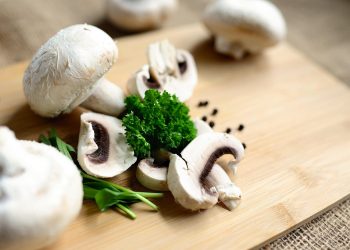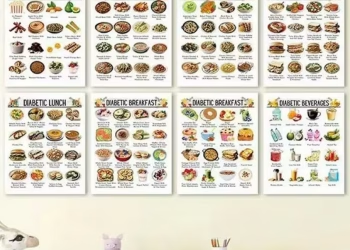Embracing a Sugar-Free Lifestyle: A Beginner’s Guide to Simple Swaps
Thinking about cutting back on sugar? You’re not alone! Many people are exploring the benefits of a sugar-free or low-sugar lifestyle, including improved energy levels, weight management, and better overall health. But the idea of completely eliminating sugar can seem daunting. The good news is, you don’t have to go cold turkey. Small, sustainable changes are the key to long-term success. This guide will provide you with simple swaps and actionable tips to start your sugar-free journey.
Understanding Sugar’s Impact
Before diving into the swaps, let’s briefly touch on why reducing sugar intake is beneficial. Excessive sugar consumption is linked to various health issues, including:
- Weight gain and obesity
- Type 2 diabetes
- Heart disease
- Tooth decay
- Increased risk of certain cancers
- Inflammation
It’s important to distinguish between added sugars (found in processed foods and sugary drinks) and naturally occurring sugars (found in fruits and vegetables). While fruit contains sugar, it also provides essential vitamins, minerals, and fiber. The focus should be on minimizing added sugars.
Simple Sugar Swaps for Beginners
Here are some easy-to-implement swaps to reduce your sugar intake:
1. Rethink Your Beverages
Sugary drinks are a major source of added sugar. This is often the easiest place to start making significant changes.
- Swap: Soda, juice, sweetened tea/coffee For: Water, sparkling water with lemon or lime, unsweetened tea/coffee, herbal tea.
- Example: Instead of grabbing a can of soda with lunch, opt for a sparkling water with a squeeze of citrus.
- Tip: If you find water boring, infuse it with fruits like berries, cucumbers, or mint.
2. Breakfast Transformation
Many breakfast cereals and pastries are loaded with sugar. Make your first meal of the day a sugar-free success!
- Swap: Sugary cereals, pastries, sweetened yogurt For: Oatmeal with berries and nuts, eggs with vegetables, plain yogurt with a drizzle of unsweetened almond butter and a sprinkle of chia seeds.
- Example: Trade your bowl of sugary cereal for a bowl of plain oatmeal topped with blueberries, a handful of almonds, and a sprinkle of cinnamon.
- Tip: Read the labels carefully and choose cereals with less than 5 grams of sugar per serving.
3. Sweet Treat Alternatives
Cravings for sweets are normal! Instead of reaching for processed candies and cookies, try these healthier alternatives.
- Swap: Candy bars, cookies, ice cream For: Fresh fruit, a handful of nuts, a small square of dark chocolate (70% cacao or higher), homemade sugar-free treats.
- Example: Instead of a candy bar after dinner, enjoy a small bowl of berries with a dollop of unsweetened whipped cream (made with stevia, if desired).
- Tip: Experiment with sugar-free recipes for cookies, cakes, and other desserts, using natural sweeteners like stevia or erythritol in moderation.
4. Sauces and Condiments Check
Many sauces and condiments contain hidden sugars. Be a label detective!
- Swap: Ketchup, BBQ sauce, salad dressings For: Sugar-free ketchup, homemade BBQ sauce (using natural sweeteners), olive oil and vinegar dressing, mustard.
- Example: Instead of store-bought BBQ sauce, try making your own with tomato paste, spices, and a touch of stevia or monk fruit.
- Tip: Read the ingredient list and look for words like “sugar,” “corn syrup,” “dextrose,” “fructose,” and “sucrose.”
5. Snack Smarter
Avoid sugary snacks by planning ahead and choosing healthier options.
- Swap: Processed snack bars, chips, crackers For: Nuts and seeds, vegetables with hummus, hard-boiled eggs, cheese slices, Greek yogurt.
- Example: Pack a small bag of almonds and walnuts for a mid-afternoon snack instead of reaching for a bag of chips.
- Tip: Prepare your snacks in advance to avoid impulsive, sugary choices when hunger strikes.
6. Cooking and Baking Adjustments
Reduce the amount of sugar in your recipes and experiment with sugar-free alternatives.
- Swap: Sugar For: Stevia, erythritol, monk fruit (in moderation), unsweetened applesauce, mashed banana (for moisture).
- Example: Reduce the sugar in your favorite cookie recipe by 25% and add a touch of vanilla extract for extra flavor.
- Tip: When using sugar substitutes, start with a small amount and adjust to your taste preference. Keep in mind that some substitutes have a different sweetness level than sugar.
7. Read Labels Diligently
This is perhaps the most crucial step. Become a savvy label reader and learn to identify added sugars in various forms.
- Focus: Look for “added sugars” on the nutrition facts label.
- Be Aware: Sugar can be listed under many different names, including:
- Sucrose
- Glucose
- Fructose
- Dextrose
- Corn syrup
- High-fructose corn syrup
- Maltose
- Agave nectar
- Molasses
- Aim: Limit your intake of added sugars as much as possible.
Tips for Success
Here are some additional tips to help you stick to your sugar-free goals:
- Start Slowly: Don’t try to eliminate all sugar at once. Make gradual changes to avoid feeling deprived.
- Plan Your Meals: Planning your meals and snacks in advance will help you make healthier choices.
- Cook at Home: Cooking at home gives you more control over the ingredients you use.
- Stay Hydrated: Drinking plenty of water can help curb sugar cravings.
- Get Enough Sleep: Lack of sleep can increase cravings for sugary foods.
- Manage Stress: Stress can also trigger sugar cravings. Find healthy ways to manage stress, such as exercise, yoga, or meditation.
- Find Support: Connect with friends, family, or online communities for support and encouragement.
- Don’t Be Too Hard on Yourself: It’s okay to have occasional treats. The key is to focus on making healthy choices most of the time.
Overcoming Common Challenges
Cutting back on sugar can be challenging, but these strategies can help you overcome common obstacles:
- Cravings: When cravings strike, try drinking a glass of water, going for a walk, or distracting yourself with another activity.
- Social Situations: It can be difficult to avoid sugar at parties and social gatherings. Offer to bring a sugar-free dish or snack, and be mindful of your choices.
- Restaurant Meals: Ask about sugar content in sauces and dressings, and opt for grilled or baked dishes instead of fried.
- Hidden Sugars: Be vigilant about reading labels and identifying hidden sugars in processed foods.
Conclusion
Embarking on a sugar-free journey doesn’t require drastic measures. By implementing these simple swaps and lifestyle changes, you can significantly reduce your sugar intake and reap the numerous health benefits. Remember, consistency is key. Start small, be patient with yourself, and celebrate your progress along the way. You’ve got this!
Frequently Asked Questions (FAQs)
Q: Is it possible to completely eliminate sugar from my diet?
While it’s virtually impossible to eliminate all sugar (as it’s naturally present in some foods), the goal is to minimize added sugars. Focusing on whole, unprocessed foods will naturally reduce your overall sugar intake.
Q: What are some healthy sugar substitutes?
Stevia, erythritol, and monk fruit are popular sugar substitutes that are generally considered safe in moderation. However, it’s important to be aware that some people may experience digestive issues with certain sugar alcohols like erythritol.
Q: Will I experience withdrawal symptoms when I cut back on sugar?
Some people may experience mild withdrawal symptoms like headaches, fatigue, and irritability when they first cut back on sugar. These symptoms are usually temporary and subside within a few days. Staying hydrated and getting enough sleep can help minimize these effects.
Q: How long does it take to adjust to a sugar-free diet?
The amount of time it takes to adjust to a sugar-free diet varies from person to person. It may take a few weeks for your taste buds to adapt and for your cravings to subside.
Q: Can I still eat fruit on a sugar-free diet?
Yes! Fruit contains naturally occurring sugars, but it also provides essential vitamins, minerals, and fiber. Enjoy fruit in moderation as part of a balanced diet. Focus on whole fruits rather than fruit juices, which are often high in sugar and low in fiber.
Q: What if I slip up and eat something sugary?
Don’t beat yourself up! It’s okay to have occasional treats. Just get back on track with your next meal or snack. The key is to focus on making healthy choices most of the time.
Q: Where can I find sugar-free recipes?
There are many websites and cookbooks dedicated to sugar-free recipes. A simple online search will reveal a wealth of options. Look for recipes that use natural sweeteners and whole, unprocessed ingredients.












